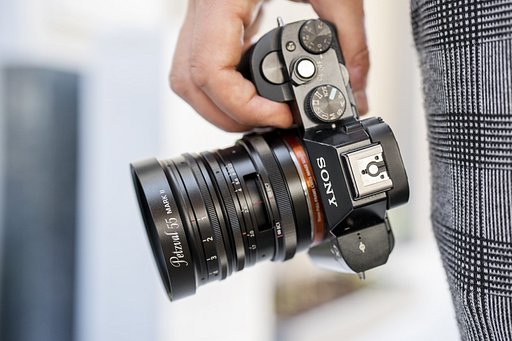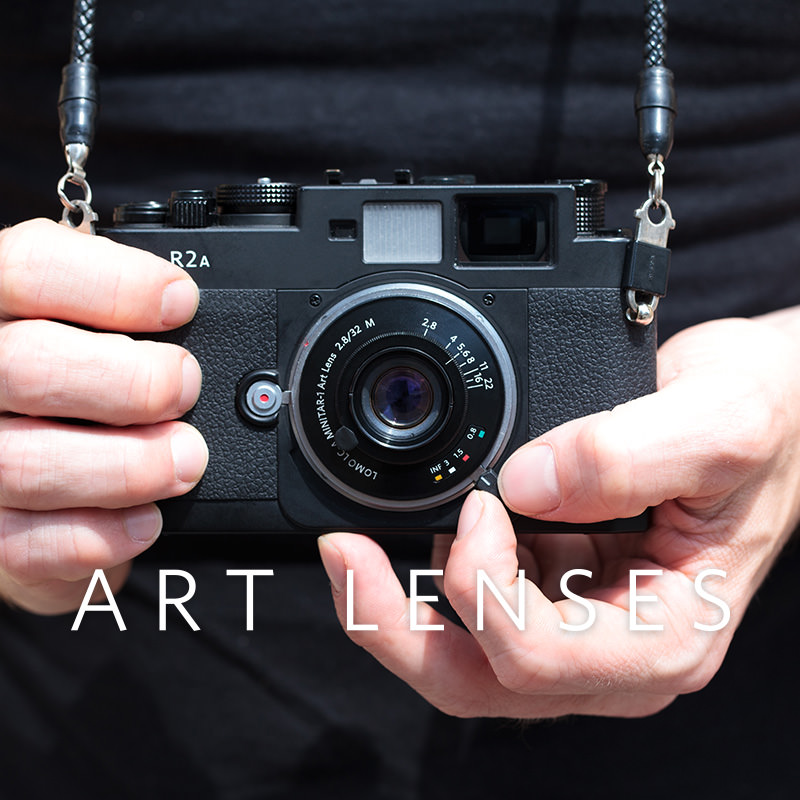In Depth: How Does Family Shape Our Photography Journey?
It's quite common for creative journeys to begin in the most familiar place: home. By innocently flipping through family albums or playing with old cameras as children, many of us unknowingly began our relationship with photography, and oftentimes, it is through the influence of older family members that this curiosity is nurtured.
In this In Depth article, we’re revisiting our creative roots and exploring our earliest encounters with art and photography at home. What exactly have we inherited from the people who raised us?
Inherited Traditions
For many of us, our earliest connection with photography was emotional before it was artistic. We witnessed cameras being used not necessarily to work or create art, but simply to capture and hold on to moments shared with our loved ones. Watching family members document birthdays, vacations, and ordinary days at home taught us the value of photographs as a way to keep memories alive.
Among those who can relate to this first-hand is Diego Iglesias, a Spanish photographer we previously featured for his work with the Lomography Fisheye No. 2.
Diego Iglesias: "My mother used to have a small point & shoot Kodak camera. She loved taking photos of my brother and me during summer trips or every kind of special moment. That was her way of keeping family memories, so the camera became very precious to her. I remember when I used to see the camera on the shelf. She always told me that I wasn't allowed to touch it because I could break it, but that made me want to try it even more. Years went by, digital photography evolved and the habit of taking film photos faded away. We saw it as an unnecessary expense at that moment."
Before learning about exposure or composition, photography was simply a tool for remembering the faces that raised us, the rooms we grew up in, and the routines of life as we age. Seeing those picture-taking moments during occasions and looking at our printed photos in frames and albums might have been the first thing to nudge our curiosity about photography. Eventually, that curiosity grew into passion, and we learned to pick up cameras with more intent.
Diego Iglesias: "By 2016, my older brother (@la8oratoriodealmas on Instagram) bought a digital Canon camera for his first photography project. He has always been such an inspiration for me, from clothing style to music. Just like a life teacher. He also started with analogue photography, with a small compact camera. It had a great optical zoom. I remember having so much fun zooming all the way. He made me discover this amazing analogue world. For me, he is so talented, and he taught me how to take the best pics. Honestly, his support and advice mean a lot to me. I used to borrow his camera to take some photos, and I fell in love with the feeling of waiting to reveal the pic, not just randomly snapping."
Inherited Tools
Lomography’s Golden Rule #3 reminds us that our cameras are extensions of ourselves. Keeping this rule in mind, it's even more magical to hold a passed down camera knowing it once carried someone’s unique desires and feelings. A piece of them breathes through the gear that they hand down, allowing our individualities to co-exist with theirs.
Jacinta Luo, a Lomography team member from China, understands this well, having grown up influenced into photography by her grandfather and eventually inheriting his beloved camera.
Jacinta Luo: "I didn’t actually see my grandfather take photos very often, but growing up, I would always notice the prints he kept pressed underneath the glass on his desk — photos of different family members at different stages of their lives, quietly marking time."
While no material possession can truly compete with the beauty of raw human connection, inherited tools serve as tangible links between generations. To see and understand the world through the same gear they once held is to share in their gaze — a personal and intimate experience that is representative of the analogue spirit.
Jacinta Luo: "Earlier this year, during the Chinese New Year, I brought a Lomo’Instant Square home, and we took photos of the family cats together. He hadn’t been very talkative for a long time because of his hearing loss, but on that day, photography somehow opened him up. When he learned that I now work for an analogue photography company, he handed me his Minolta X-700 and said I should give his camera a try. He passed away later this year. The first roll I shot on his camera was after he was gone. I think that interaction — that sense of continuity and connection — is why analogue matters."
Inherited Vision
We’re surrounded by art. The structure of a building was designed by an architect, the clothes we wear were made by a designer, and even the logos on food packaging were drawn by an artist. It’s easy to notice these things now that we’re conscious consumers and makers of art, but even before we realized it, creativity already lived around and seeped into us in ways we didn’t yet understand.
Sophie Schwartz's artistry was largely shaped by the creative community that they grew up surrounded by. This kind of influence was especially present in WE DO THE REST — a continuation of their late father's project as a photographer.
Sophie Schwartz: "Whenever I speak about my photographic practice, I almost always divulge that I am a child of a photographer and a psychologist. Through that lens, my work and research make complete sense. I was lucky enough to be raised by my parents’ community of artists. Not only was I surrounded by the prints of photographers including Lois Conner, Larry Fink, Lee Friedlander, and Andrea Modica, I was often photographed by them. The experience of being regularly photographed as a child certainly informs my interest in photographing people and my ongoing exploration of the structure and event of the photographic session.”
During our formative years, what our family exposed us to shaped our creative taste and sense of expression. The decor they chose in the house, the music they played in the car, and the movies they flashed on TV were all subtle influences that silently shaped our perspectives. They guided how we see the world and how we later learned to create within it.
Sophie Schwartz: "After my dad’s passing when I was nineteen, photography became increasingly central in my life. I have spent the past decade making photographs with the same camera he used when he was my age, researching and remaking the work he made when he was in graduate school, and processing my grief through following in his footsteps. My mom continues to be my greatest supporter and confidant. Not only did she spend years as a PhD psychologist, she is an incredibly talented seamstress and I believe her modes of problem solving have made their way into my practice. "
Creative vision is inherited. Families leave behind more than tangible things; they also pass down ways of seeing. Many photographers’ first cameras once belonged to a parent or grandparent, but beyond the gear itself, what we truly inherit is perspective.
The Pass On
As we step beyond the walls of our homes and discover ourselves in the world, we carry those inherited traditions, tools, and visions with us — both as keepsakes of our families and as part of our own evolving identity. They honor where we came from while also continuously shaping who we will become.
As he experiences fatherhood today, Community member @mr_megyerious remembers his own father, a photographer, and how significant these relationships are to his journey with photography. He reflects on how the craft has been passed down in his family and how the cycle will perhaps continue as he raises his son.
@mr_megyerious: "My child, Balázs, just turned one, and recently, as I watch him exploring — touching, walking, coming and going, examining things — I’ve been flooded with deep memories. Memories of my father, who was a photographer himself. He had a suitcase filled with developing chemicals, fixer, and other tools, tucked away in a cabinet. As a young child, I would often open that cabinet, take out the photo papers, negatives, and old pictures, and marvel at them. Now, as my own child grows, those memories have come back to me in a profound way. I’ve realized that for me, photography is deeply tied to fatherhood and identity. It’s a way of connecting with my past, embracing the present, and capturing what truly matters."
Over time, we become a product of all the people we connect with. We start at home with the family that raised us, and then extend to the families we create, whether by blood or by choice — with friends, mentors, and the creative communities we build, like here at Lomography. It is through these connections that the spirit of visual storytelling continues to flow through generations, ensuring that the art of photography lives on.
As we look back at our first encounters with photography at home, we’re reminded of how much we’ve grown into our own selves, even as we carry the influences of our families. Every photo we take honors their love and carries their guidance forward.
We'd love to hear how your family influenced your creative journey. Leave a comment below and share your story with us!
written by francinegaebriele on 2025-11-23 #people #in-depth #family #childhood #community #generation #in-depth #inherited















































No Comments